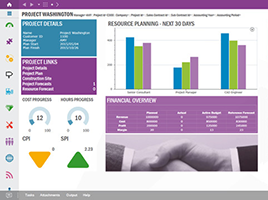ERP News – worldwide – erpnews.com – When should a growing company start thinking about a formal, automated spend management program? At the same time you get your first ERP system. The two go hand in hand, but most companies put an ERP system in place and then, when they get to about 800 or so employees, they start thinking about automating spend management, starting with e-procurement and e-invoicing.

A little further down the road, they start thinking about systems for budgeting, travel, employee stock administration and maybe analytics.
The problem with thinking about all these systems separately and sequentially is that instead of thinking about the optimal way to handle each function, you’re thinking about how to solve each problem within the constraints of the systems you already have.
It’s like building a house without a set of plans, one room at a time. It’s an inefficient way to build, and you’re going to end up with a pretty funky floor plan.
You can save time and money, and gain a competitive advantage, by thinking about your finance system as a whole, and drawing up a set of plans for building it from the foundation up, starting with ERP and spend management.
It all starts with invoicing
Your finance system really starts when you start paying invoices. What most growth companies do is buy QuickBooks or some other inexpensive entry-level software to do that, and then shift their focus back to sales and revenue.
As the company grows, it becomes evident that this entry-level system is no longer meeting the company’s needs so they start thinking about an ERP system. These days that doesn’t have to be a multi-million dollar undertaking. Cloud ERPs such as NetSuite can work for businesses as small as 40-50 people, and they can scale up to work for as many as 100,000 people.
So, the CFO or Controller spearheads an effort to get an entry-level ERP system to address core financials, and then, once again, they shift focus back to sales and revenue.
The ‘flip the switch’ myth
Spend management – most notably, e-procurement and e-invoicing – are what people typically tackle next, but most postpone thinking about them until they get there. Or they think, “the ERP system has some requisitioning and invoicing functionality. We’ve got the license and we’ll just flip the switch on those when we need them.”
If only it were that easy.
Yes, many ERP systems do some basic requisitioning and e-invoicing. But their functionality will not come close to satisfying requirements for effectively managing spend, and there’s too much they don’t do, such as sourcing and contracts.
Flipping the switch will only expose those decisions you didn’t make at the outset. Don’t fall into the “flip the switch” trap. Nobody intentionally uses the requisitioning in their ERP to manage spend – they settle for it.
Or, they figure out they need more functionality than the ERP provides and launch an entirely new initiative to vet spend management solutions. But it could have all been figured out at the point where you went from QuickBooks to NetSuite, without taking too much more time, money and resources.
ERP and those first pieces of spend management should be done all at once, so bring procurement and AP to the table for that discussion. Not only will you make a better buying decision, but you’ll have an opportunity to streamline the implementation process.
It will only take fractionally longer to implement both at once, but if you do your ERP implementation and then come back later to implement spend management, you’ll end up doing a lot of the same work over.
A Biggish Bang
There might be reasons to do it that way, but those have to be weighed against the fact that when it comes to your financial management system, it’s not “if” but “when.” It makes more sense to implement ERP and spend management solutions together in a biggish bang because like peanut butter and chocolate, they’re even better together.
Spend management is a low impact, high return insertion that will make your ERP implementation better. The procurement piece can create all the purchase orders that get pushed into the ERP, where you’ve already got the right categories and accounting codes.
Why wouldn’t you want to feed your ERP good, clean data to begin with, in an easy way that people can use and understand? With the cloud, it doesn’t matter if you only have twenty people buying things, or if you’re only doing a few hundred invoices a month.
You probably won’t automate your whole financial system right out of the gate, but you should still think it through and draw a set of plans with the end goal in mind. So, think thrice before you buy that ERP system. Think about the next imminent piece, which is spend management. Think about how you build out from there. You’ll be way ahead of the competition that’s doing it the way we’ve always done it.
You’re not going to have a lot of messes to clean up because you set it up right from the outset, and you’ll be paying a lot less for transactional processing than the competition.



